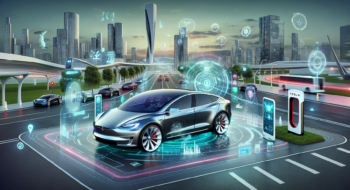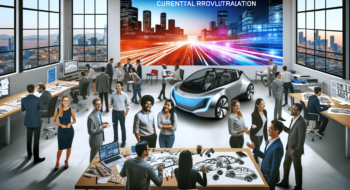In a world increasingly dominated by technology, the emergence of robot toys and automated cars represents a fascinating intersection of innovation and play. However, as we embrace these advancements, we must also consider the potential pitfalls they may bring. A recent exploration into this topic highlights the fine balance between enthusiasm for robotic advancements and the need for cautious optimism. Join us as we delve into the implications of these gadgets and what they might mean for the future we hope to cultivate.
Will Robot Toys and Cars Hinder Our Technological Future?
The concept of technology intertwining with play is not a new one; people have long marveled at how gadgets animate the imaginations of children and adults alike. Do you remember your first R/C car? The hours spent racing it through the living room, navigating obstacles and performing wild stunts? Fast forward a couple of decades and there are now robot toys capable of responding to voice commands, learning user preferences, and interacting seamlessly with our daily lives. Meanwhile, autonomous vehicles promise a future where we can travel hands-free, liberated from the chaos of traditional driving.
The Allure of Robot Toys
Robot toys are designed to engage children and help them harness cognitive skills through play. When programmed correctly, these toys can teach crucial coding concepts and stimulate problem-solving skills. The spectrum ranges from simple programmable robots like Botley to more advanced options such as Cozmo. These toys encourage creativity and foster an interest in STEM (science, technology, engineering, and mathematics) at a young age.
- Hands-On Learning: Robot toys provide a tactile experience that promotes hands-on learning, encouraging kids to experiment with programming.
- Encouraging Creativity: Children can design obstacle courses or challenges for their robot companions, allowing for imaginative scenarios.
- Social Interaction: Many robot toys can connect with others, turning individual play into valuable cooperative experiences.
However, therein lies the rub: these delightful gadgets can become distractions. With screens vying for attention and interactive toys that can do just about anything, we must wonder whether they will lead to over-reliance on technology in developmental years. Research suggests excessive screen time can adversely impact kids’ physical health, cognitive growth, and social skills. In navigating this fine line, parents must find a balance in their children’s engagement with tech.
The Rise of Automated Cars
Now, let’s hit the accelerator and shift gears into the world of automated cars. The advent of self-driving vehicles has captured our imagination, promising a bright and safer future where error-prone humans are replaced by high-tech systems that can drive responsibly. Industry leaders such as Waymo and Tesla are pioneering this domain, and while the innovations are staggering, they also present challenges that cannot be ignored.
- Enhanced Safety: Autonomous vehicles have the potential to reduce accidents caused by human error, which constitutes the majority of traffic incidents.
- Efficiency in Transportation: Self-driving cars could ease traffic congestion and potentially lower travel times through more efficient routing.
- Accessibility: These vehicles can provide freedom for people who can’t drive due to age or disability, enabling greater independence.
However, despite the promise they hold, self-driving cars also carry with them concerns. The question of ethics emerges: should we trust a machine to make life-or-death decisions? The challenge of programming ethical behavior into these autonomous systems looms large. Additionally, the abrupt introduction of such technology could lead to massive unemployment in sectors reliant on traditional driving, such as trucking and taxi services.
Technology vs. Human Experience
At the heart of the debate is a vital question: what happens to our human experiences when we increasingly rely on robots and automated systems? The childhood experiences with robot toys can equip our children with essential skills, but at what cost to their imaginative and experiential learning? The feeling of tangible play—a child constructing a towering block structure, only to watch it topple with a laugh—might be overshadowed by the instant gratification a robot toy offers.
Moreover, consider self-driving cars. Will they rob us of the quintessential human experience of driving? Is the ease of automated transportation worth its potential to diminish our agency on the road? We find ourselves at a critical junction, facing not just what we can create technologically, but what impacts those creations will have on our daily lives and our society as a whole.
Finding a Middle Ground
So, what’s the way forward? It’s crucial for creators, educators, and parents to recognize the benefits of robot toys and automated vehicles while actively mitigating possible negative outcomes. Here are several strategies that can help shape a more harmonious relationship with technology:
- Establish Technology Curfews: Limiting the time spent on robot toys and automated gadgets ensures a balanced approach to play and learning.
- Encourage Diverse Play: Integrating different forms of play—both technological and traditional—can inspire creativity and interaction in children.
- Incorporate Educational Lessons: Utilize robot toys to foster problem-solving skills and creativity in structured learning environments.
- Explore Ethical Discussions: For older children and adults, discussing the implications of technology can lead to healthier tech engagement.
The Future is What We Make It
In examining the delightful world of robot toys and the exciting prospects of automated cars, it’s clear that they present both opportunities and challenges. These technological marvels have immense potential to enhance learning experiences and reshape how we navigate our surroundings. Yet, we must remain vigilant and thoughtful in how we incorporate them into our lives.
With the right balance, we can foster a tech-savvy generation that understands both the power of innovation and the importance of retaining their humanity in a digital future. After all, technology should serve as an extension of our capabilities, not as a replacement for our unique experiences as humans.
As we venture into this exciting landscape, let’s remain aware stewards of both innovation and tradition, ensuring that technology complements our lives rather than narrows them. The future holds great promise—let’s embrace it fully while keeping an eye on our fundamental human experience.
In conclusion, while robot toys and automated cars are a testament to human creativity, we must wield this power wisely. Embracing our technological future with enthusiasm, paired with caution and critical thinking, will help ensure that we are not hindered, but instead inspired.
For more insights on technology and its implications, explore the latest articles at Neyrotex.com.







